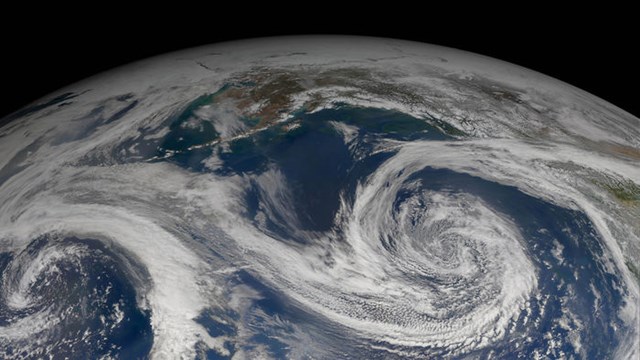
As the climate changes, storms such as this one in the Gulf of Alaska will meander poleward. Norman Kuring/NASA Ocean Color Web
Cyclones likely to blossom at higher latitudes
In a warmer climate, storms that start to build over the oceans at mid-latitudes will both form and reach peak strength closer to the poles, potentially bringing harsher weather to some heavily populated areas.
Earth’s mid-latitudes commonly experience cyclonic storms, which are large-scale, low-pressure systems that can produce strong gales, thunderstorms and, unlike tropical cyclones, rapid drops in temperature. To determine how the tracks of these storms might change in a warmer world, Talia Tamarin-Brodsky and Yohai Kaspi at the Weizmann Institute of Science in Rehovot, Israel, compared historical climate model simulations for 1980–1999 with projections for 2080–2099.
They found that in all storm-forming regions studied, but most markedly in the Southern Hemisphere, cyclones’ average starting point shifted slightly towards the poles. Storms also propagated polewards, and cyclones reached their maximum strength farther from the latitude where they had formed.
The projected shifts are driven mainly by increased atmospheric water vapour and stronger winds in the upper atmosphere, the researchers suggest.
